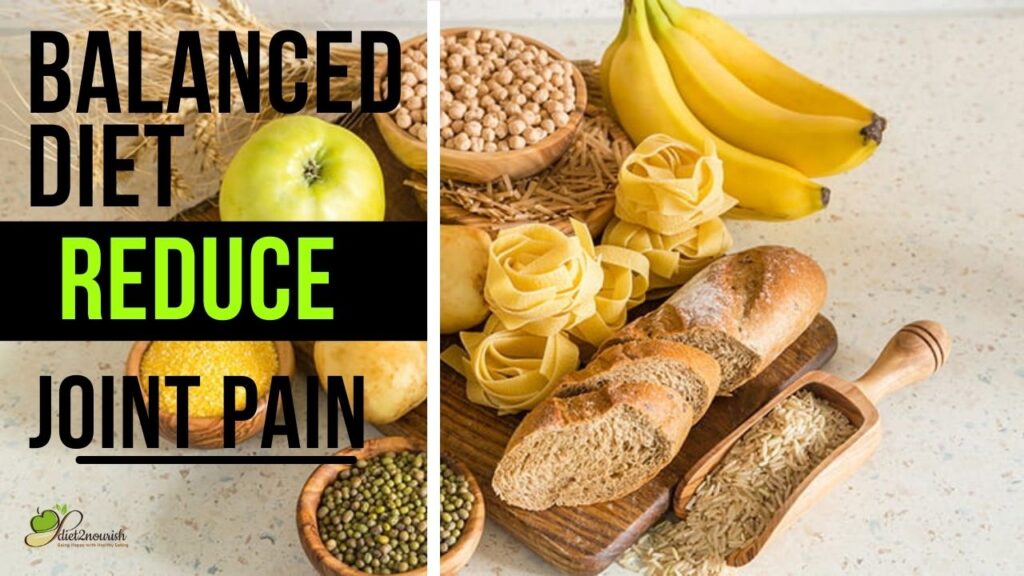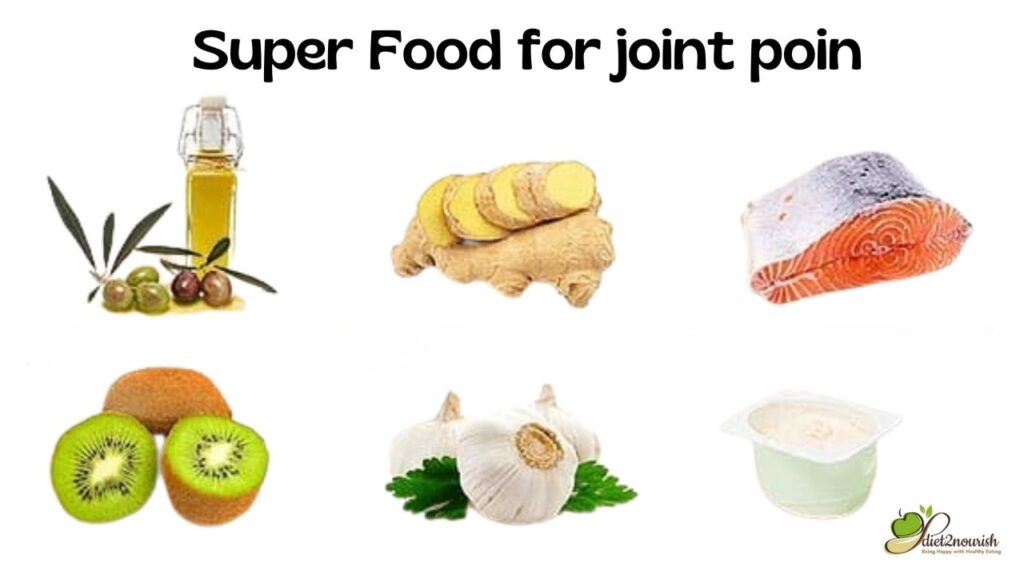Diet chart for joint pain
As we age, the lubrication in between the cartilages gets affected. It leads to joint pain, a physical pain where two or more bones meet. Therefore, it can occur in different body parts, especially in the knees, hips, hands, feet, or spine. The pain can be mild or sabotaging, depending on its causes. Damage to the joints and other body parts can result from joint pain. Chronic Inflammation is a sign of osteoarthritis. The bone degeneration irritates soft tissues and is associated with lupus, Rheumatoid Arthritis, and psoriatic Arthritis. When Inflammation is neglected, it can seriously harm joints. Joint pain can be improved by including healthy foods in the diet chart for joint pain.
Causes
Joint pain has a large number of causes. Some of which may be due to underlying diseases. At the same time, some are due to heavy physical activity, sprains, or strains.
The most familiar reasons for joint pain are Arthritis or joint Inflammation. It is Inflammation of joints, inflicting pain and stiffness that can worsen with age. Various types of Arthritis have different causes, including wear and tear, infections, and underlying diseases.
Balanced Diet Chart for Joint Pain

Certain qualities are present in foods that are regarded as anti-inflammatory. According to clinical exploration, food sources play an undeniably significant part in collective well-being and agony decrease. They include more antioxidants and omega-3 fatty acids than other foods. The truth is that many foods make joint pain and other symptoms of Arthritis worse than they otherwise would be.
Below is the balanced diet chart for Joint Pain
Monday
| Meal | Timing |
| Egg roast approx. half cup and one cup egg curry with two egg , and two chapati | Breakfast (8:00-8:30) AM |
| Green gram sprouts Approx. (1 cup) | Mid-Meal (11:00-11:30) AM |
| Half cup salad , Fish curry (Salmon 75g) with 4 Roti | Lunch (2:00-2:30) PM |
| One portion Fruits like (Pineapple, Blueberry, Orange, Apple, cherries.) | Evening (4:00-4:30)PM |
| Three chapati. With Tomato sabji Approx half cup | Dinner (8:00-8:30)PM |
Tuesday
| Meal | Timing |
| One cup skimmed milk with Egg sandwich with 4 slice bread | Breakfast (8:00-8:30) AM |
| One portion Fruits like (Pineapple, Blueberry, Orange, Apple, cherries.) | Mid-Meal (11:00-11:30) AM |
| One cup Low fat curd with Tomato Veg pulav rice one and half cup | Lunch (2:00-2:30) PM |
| Two Biscuit with One cup light black or green tea | Evening (4:00-4:30) PM |
| Three Chapathi with Ladies finger sabji half cup | Dinner (8:00-8:30) PM |
Wednesday
| Meal | Timing |
| One tbs green chutney and 1 boiled egg with three Besan cheela | Breakfast (8:00-8:30) AM |
| One portion Fruits like (Pineapple, Blueberry, Orange, Apple, cherries.) | Mid-Meal (11:00-11:30) AM |
| Spinach subji half cup with One cup brown rice and Tomato with coconut curry half cup | Lunch (2:00-2:30) PM |
| One cup skim milk | Evening (4:00-4:30) PM |
| half cup green beans subji with Broken weat upma one cup | Dinner (8:00-8:30) PM |
Thursday
| Meal | Timing |
| Two Mushroom Paratha with Tomato chutney | Breakfast (8:00-8:30) AM |
| plain Yogurt with raw vegetables or grilled vegetables approx. one cup | Mid-Meal (11:00-11:30) AM |
| Half cup kale salad with One cup ricewith Tuna curry ( 80 gm Tuna) | Lunch (2:00-2:30) PM |
| One portion Fruits like (Pineapple, Blueberry, Orange, Apple, cherries.) | Evening (4:00-4:30) PM |
| Three chapati half cup mix veg curry | Dinner (8:00-8:30) PM |
Friday
| Meal | Timing |
| One boiled egg with Oats upma one cup | Breakfast (8:00-8:30) AM |
| One portion Fruits(Pineapple, Blueberry, Orange, Apple, cherries.) | Mid-Meal (11:00-11:30) AM |
| One cup rice & Mushroom curry half cup , celery salad half cup Ladies finger sabji half cup | Lunch (2:00-2:30) PM |
| One cup milk with walnuts | Evening (4:00-4:30) PM |
| Three chapati,Ridge guard subji half cup | Dinner (8:00-8:30) PM |
Saturday
| Meal | Timing |
| Paneer Paratha 3 with Green chutney | Breakfast (8:00-8:30) AM |
| One cup boiled black chana | Mid-Meal (11:00-11:30) AM |
| Two medium chapati ,Half cup rice , Fish masala one cup( Mackerel 75 g) and Snake guard subji half cup | Lunch (2:00-2:30) PM |
| Yogurt and one Portion fruit salad | Evening (4:00-4:30) PM |
| Half cup green beans subji and Broken wheat upma one cup | Dinner (8:00-8:30) PM |
Sunday
| Meal | Timing |
| One glass skimmed milk, Three Wheat dosa ,Tomato /green chutney | Breakfast (8:00-8:30) AM |
| One portion Fruits(Pineapple, Blueberry, Orange, Apple, cherries.) | Mid-Meal (11:00-11:30) AM |
| One cup rice+Palak dal half cup and half cup Beetroot subji | Lunch (2:00-2:30) PM |
| One glass lemon juice , Brown rice flakes poha with nuts one cup | Evening (4:00-4:30) PM |
| One cup Bitter gourd sabji, Three Wheat dosa | Dinner (8:00-8:30) PM |
Food for knee pain and food for knee strengthening

Onions, ginger, turmeric, and garlic all have anti-inflammatory effects. These effectively treat joint pain, arthritis, and other related symptoms. Include these vegetables in your joint pain diet. Additionally, you can also consume it as a supplement.
Whole Grains
Whole wheat, whole oats, quinoa, barley, and rye are the grains beneficial for joint pain. In addition, whole grains relieve rheumatoid arthritis symptoms and ease arthritis.
Olive Oil
Vegetarian, sunflower, and groundnut oil should not be used in the diet chart for joint pain. Instead, use olive oil for cooking and making salad dressings. It will relieve common pain symptoms. In addition, omega-3 is mainly found in olive oil, which is also beneficial for the body and muscles.
Brassica plants
The Brassica family includes leafy greens like kale, mustard greens, arugula, and purple cabbage. Other nutritious veggies on the list include Brussels sprouts, cauliflower, and broccoli. These vegetables are packed with nutrients, vitamins, and fiber that are good for healthy joints.
Fruits for Arthritis
Similar to veggies, certain fruits are better than others at lowering inflammatory levels in the body. Apples and pineapples are two other fiber-rich, anti-inflammatory fruits that have positive effects on gut health. v is Particularly fond of foods rich in anthocyanins, which are blueberries. This aid the body’s ability to “switch off” inflammatory responses. A vitamin that lessens arthritis-related joint pain. Richly colored fruits contain anthocyanins and lycopene. Include blueberries, blackberries, tomatoes, strawberries, cherries, raspberries, and grapes in your diet. They restrict the inflammatory response.
Diet for arthritis
Along with dietary changes, it is preferable to strive toward preserving joint functionality and a healthy lifestyle. Regular exercise and keeping a healthy weight are beneficial in reducing joint discomfort, joint pain, and arthritis. Here are some food components which should be part of the diet for arthritis to relieve swelling and symptoms.
Fiber:
Blood levels of C reactive protein rise when the body is inflamed. Fiber aids in removing these C-reactive proteins from the body and lessens the impact of inflammation. It also aids in weight maintenance. And relieves joint discomfort. Include fruits, vegetables, and whole grains in your diet.
Fruits
are high in antioxidants- Antioxidants aid in the battle against inflammation. So include at least 5–6 servings of fruit such as berries, apples, and pomegranate in your diet each day.
According to one study, cruciferous vegetables can help prevent the onset of joint pain. These are also known as anti-inflammatory vegetables. Include broccoli, cabbage, cauliflower, mushrooms, Brussels sprouts, and broccoli in either frozen or fresh form. Add them into a stir-fry, salads, or as healthy side dishes.
Omega- 3–
Fatty acids with omega-3s have anti-inflammatory properties. Olive oil, seafood, flax seeds, walnuts, eggs, and eggs are all excellent sources of omega 3. Olive oil’s oleic acid reduces inflammation. Rheumatoid joint discomfort is less painful and stiff when consumed on a Mediterranean diet high in olive oil.
Plant Protein:
The purine content of plant proteins in dals and pulses is minimal. Additionally, they include an antioxidant that reduces inflammation. Whole pulses are a good source of fiber, which also aids in weight loss.
Vitamin- D–
As everyone knows, vitamin D keeps bones strong and dense. As a result, it stops bone aging. Fish, dairy products ingested in moderation, and sunlight exposure are a few food sources for vitamin D. A pharmaceutical dose of vitamin D in the form of granules or injection is advised for deficiency.
Ginger:
Ginger is best used to treat conditions like colds, coughs, sore throats, hypertension, and digestive issues. However, research published in The Journal of Medical Food has shown that ginger’s anti-inflammatory properties can alleviate joint pain. In addition, ginger is helpful for food seasoning, or dried ginger can be infused in milk or tea.
Calcium food for knee pain
We all know about the benefits of calcium as we are advised to consume calcium-rich food since childhood. It is a bone-boosting mineral essential for healthy teeth, bones, and joints. Therefore, adequate calcium consumption can help you maintain bone and joint health.
- Tofu
- Salmon
- Tuna
- Almond butter
- White beans
- Sardines
- Eggs
List of foods that cause joint pain
We learned about diet for arthritis and food for knee pain. Let’s look more closely at the food items we must not include in the diet chart for joint pain and diet for arthritis.
The body’s purine levels rise when dairy products are consumed in excess. Joint discomfort is made worse by this elevated purine level. So consume dairy protein in moderation or substitute plant proteins like beans, soy, almonds, etc., for dairy protein.
Caffeine
reduces calcium absorption by obstructing vitamin D absorption. It is also a diuretic. Hence, it increases calcium excretion in the urine.
Processed Foods
exacerbate the body’s inflammatory response. Causing inflammation and joint discomfort
Salty foods
are high in sodium. Over salination accelerates the inflammatory process. So, keep your salt intake moderate throughout the day.
Food to avoid with arthritis
Foods that relieve pain are merely nutritious food options. Everyone should avoid processed foods, fried foods, sweet desserts, and marbled red meat, whether or not they have arthritis. These foods can enhance the inflammatory response and exacerbate joint discomfort, contributing to several disorders. A balanced diet can help anyone control their weight and improve their overall health while easing joint pain.
The constant pain and stiffness of arthritis frequently causes the body to be stressed or “inflamed.” In addition, heavily processed foods, red meat, sugary foods, fried foods, alcohol, refined carbohydrates, gluten, and purines cause joint pain.
Frequently asked questions ( FAQS)
How much water should I drink to help reduce joint pain?
Answer:
Staying hydrated can definitely help in reducing joint pain. Drinking enough water can help keep your joints lubricated and reduce inflammation. You should aim to drink at least 8 cups of water per day. Moreover, you can consume more if you’re exercising or in a hot environment.
Question 2:
Can exercise help with joint pain?
Answer:
Exercises can help reduce joint pain by strengthening the muscles around your joints, improving flexibility, and reducing inflammation. There are several Low-impact exercises such as swimming, yoga, and walking that are good options. You can include these exercises in your routine and complement them with a healthy diet.
How long does it take to see results from dietary changes for joint pain?
Answer:
It can take several weeks to see results from dietary changes for joint pain. However, some people may notice improvements in their symptoms within a few days. It is important to be patient and consistent with your dietary changes. You can complement your diet with appropriate exercises for joint pain. Moreover, you can even talk to your doctor if you’re not seeing any improvements.









